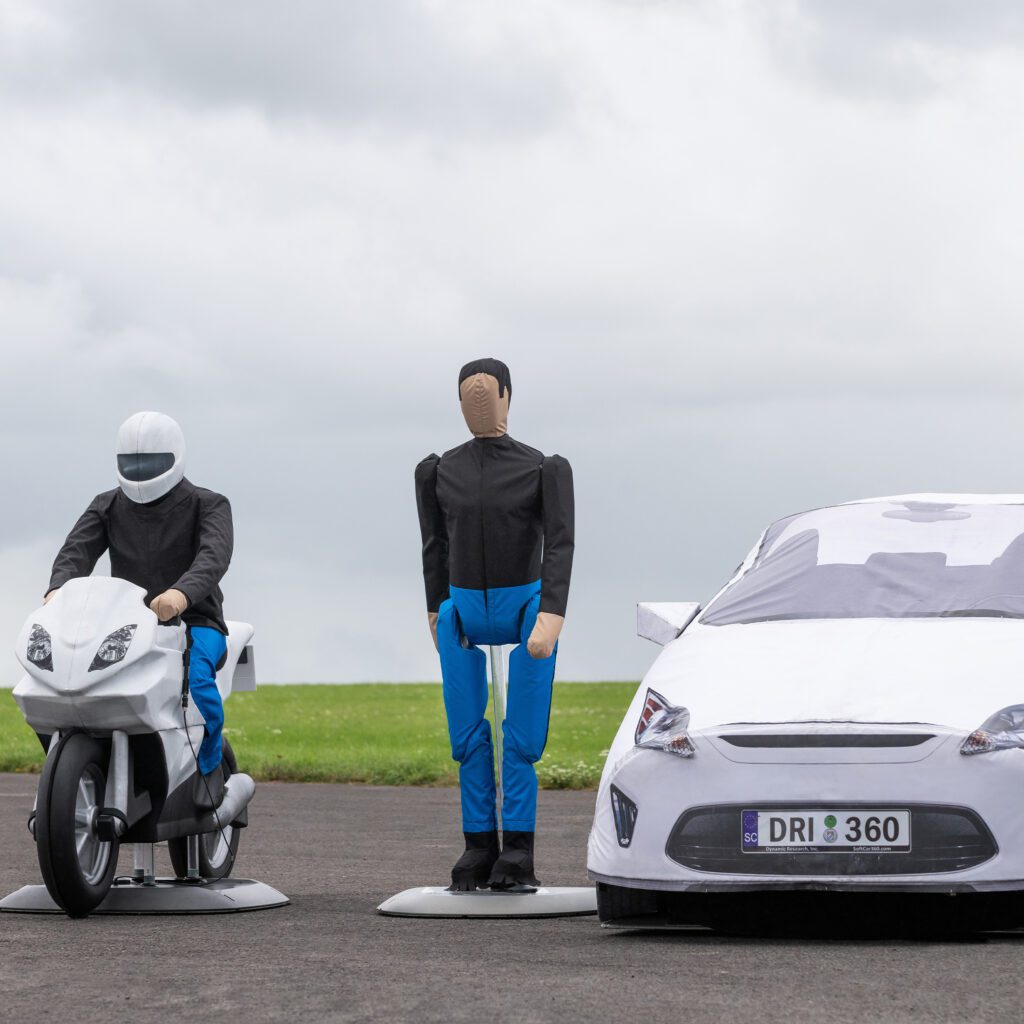Navigating the future of ADAS: Next-gen ADAS targets

As the automotive industry evolves, Original Equipment Manufacturers (OEMs) are increasingly incorporating sophisticated Advanced Driver-Assistance Systems (ADAS) technologies in their vehicles to enhance safety and the driving experience. This advancement necessitates a corresponding increase in the complexity of ADAS testing to ensure these technologies perform as intended. At DRI, as specialists in ADAS testing and target design, we are committed to staying ahead of the curve in this rapidly growing market.
In this blog post, DRI General Manager Jordan Silberling shares his insights on our approach to developing ADAS targets that meet the challenges presented by the latest advancements in ADAS technology.
Next-generation ADAS targets
The ADAS market is rapidly evolving as the automotive industry works to continually improve vehicle safety. ADAS systems are becoming more sophisticated, with their ability to identify and classify objects improving. As a result, regulatory and consumer bodies are increasing the complexity of testing to challenge these technologies. In addition, vehicle manufacturers are not only aiming to meet regulatory and consumer testing requirements but also ensure that their systems work effectively in the real world. This increased sophistication of the systems and the testing required to verify them means that targets used for testing need to be more realistic than earlier versions.
As an independent test consultancy specializing in ADAS testing, our extensive experience with conducting hundreds of tests annually has highlighted the shortcomings of commercially available targets, which often lack realism and can lead to test vehicle damage, resulting in financial repercussions and project delays.
Key elements of a next-generation ADAS target
Industry standards dictate certain design elements, such as dimensions or sensor recognition characteristics which help guarantee uniformity across the targets developed by different manufacturers. This limits the extent to which design modifications can be made. They must also fulfill specific requirements to be approved for use in official regulatory and consumer testing, such as Euro NCAP.
Above adhering to these standards, our priority is to optimize the target’s usability. We do so by designing products that are flexible, durable, and cost-effective. Our use of hard-wearing materials minimizes the damage to the target while our modular architecture minimizes costs should damage occur.
The importance of realism
In ADAS testing, the primary objective is to gather high-quality data. The quality of this data corresponds with the accuracy of the targets used, which is why DRI’s product development team focusses on ensuring our targets are as realistic as possible within the constraints of industry standards, and without compromising usability.
Collaborating with sensor suppliers has helped us understand better how ADAS sensors “see” the world. We also conduct extensive real-world research. For example, we researched pedestrian gait to ensure the motion of our dummies is representative of humans at a range of speeds. Additionally, we utilize the ScanR, our own scanning device to take radar and lidar measurements of our targets to calibrate them to mimic the signatures of real objects. The scanner also enables our customers to verify that their targets remain compliant with standards throughout their life.
It’s important to note that regulatory and consumer pedestrian ADAS testing initially required only a static target. Later, dynamic testing was introduced but currently only requires the articulation of legs. This does not accurately represent a human’s gait, which could influence how vehicles classify a pedestrian or its intentions. We foresee that the articulation of the arms and head will become necessary eventually, which the design accommodates.
Our Soft Pedestrian 360 target features sophisticated articulation of the knee, hip, shoulder and neck. This provides more control over the gait and allows a greater range of movement than is currently required by regulatory and consumer testing requirements. By making our products as realistic as possible we significantly extend their usability and lifespan.
Industry trends shaping the development of ADAS targets
The future of ADAS testing will focus on intent, specifically in understanding pedestrian behavior through instinctive human actions such as body language. For instance, if we observe someone stopped at the roadside looking both ways, we institutively understand that they intend to cross the road and can adjust our driving accordingly. Similarly, AI-trained systems and real-time image and video processing are being trained to recognize these cues. As the industry evolves, the integration of vision software becomes crucial in classifying and tracking objects. Pedestrian targets will need accurately mimic these behaviors to thoroughly test these systems.
We achieve this in the Soft Pedestrian 360 through sophisticated limb articulation and its modular architecture, which allows the standard arm to be switched easily with an arm that is holding a mobile phone, for example. AB Dynamics’ LaunchPad Spin, the platform that the target is moved by, offers turn-on-the-spot mobility to replicate sudden changes in direction or intent.
To conclude, the progression of ADAS technologies necessitates a parallel advancement in our testing methodologies and instruments. At DRI, we are committed to staying at the forefront of this evolution, developing next-gen ADAS targets that meet the needs of this swiftly evolving sector.



